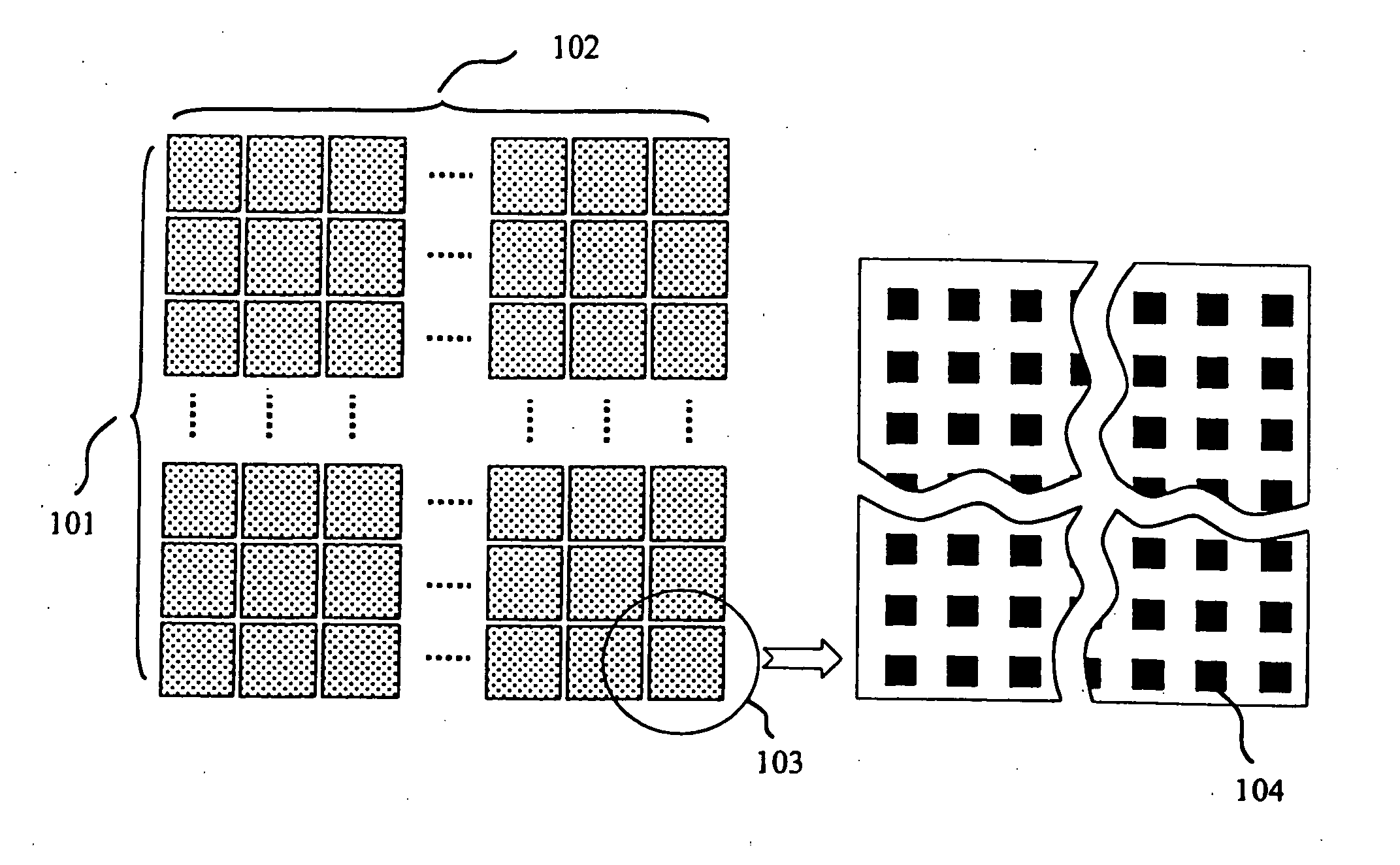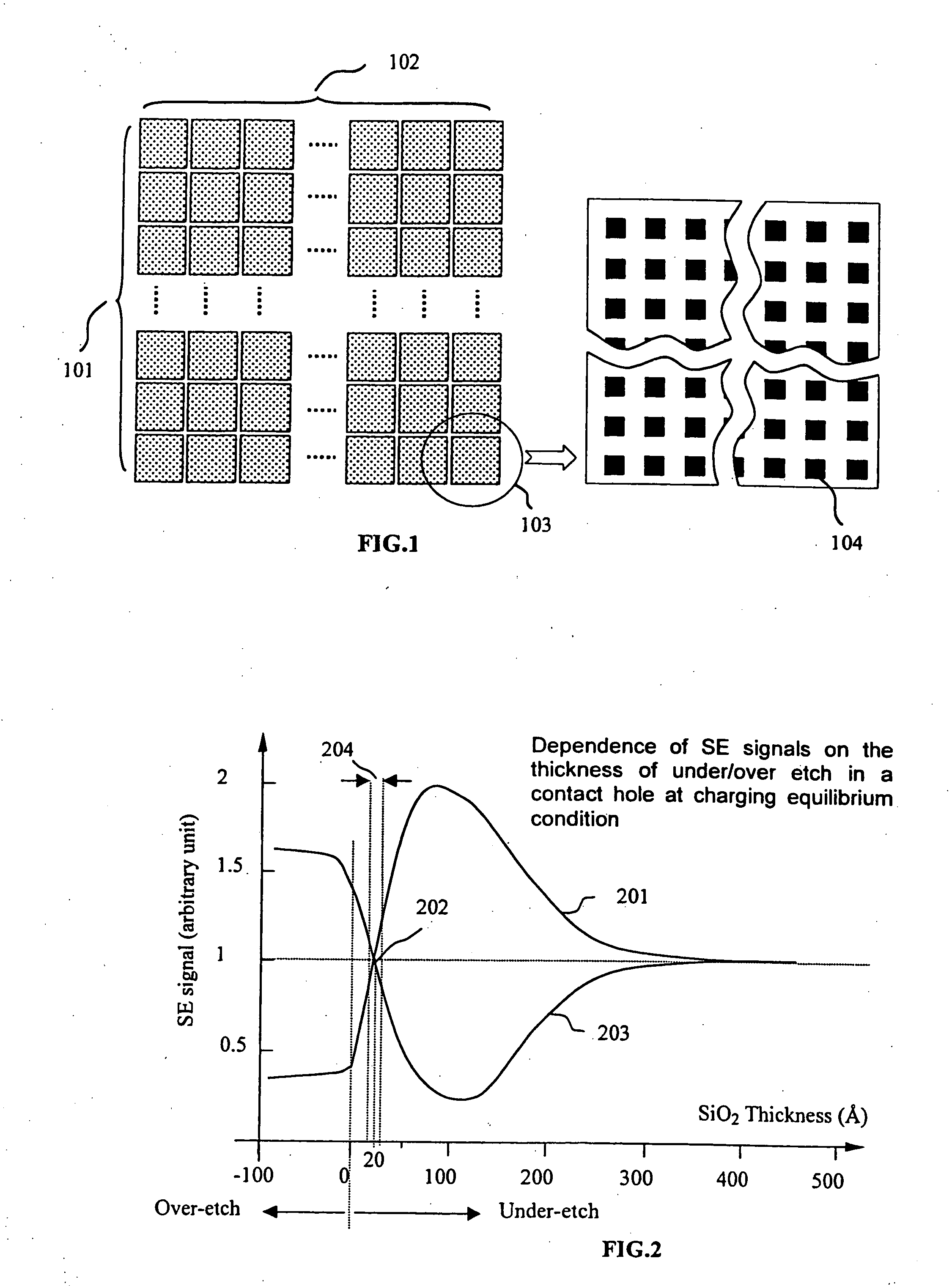Method for in-line monitoring of via/contact holes etch process based on test structures in semiconductor wafer manufacturing
a technology of contact etching and test structure, which is applied in the direction of individual semiconductor device testing, semiconductor/solid-state device testing/measurement, instruments, etc., can solve the problems of reducing the thickness of over-etch margins, affecting the yield of the etching contact hole, and occupying a significant part of the total yield loss, etc., to achieve the effect of reducing the thickness of the over-etch margins
- Summary
- Abstract
- Description
- Claims
- Application Information
AI Technical Summary
Benefits of technology
Problems solved by technology
Method used
Image
Examples
Embodiment Construction
[0022]FIG. 1 depicts an embodiment of a via / contact test structure consisting of arrays 103 with increasing via / contact size along the row 101 direction and increasing densities or pattern factor (exposed Si area / wafer area) along the column 102 direction. Each via / contact array consists via / contact holes of a single size and density (pattern factor), as 104 indicates, and is etched simultaneously with the via / contacts in the functional dies into a dielectric layer of similar thickness and topography for making contact to the buried conductive layer or active regions such as source / drain. The aim of the embodiment is to have the etching process impose different etch rates, as the result of the microloading effect, and / or RIE lag, over the variant holes and to get uneven etch over the structure range from under-etch to over-etch. Other forms or modifications and / or embodiments may also meet this purpose and are thus intended to be covered by this disclosure. The embodiment of such te...
PUM
 Login to View More
Login to View More Abstract
Description
Claims
Application Information
 Login to View More
Login to View More - R&D
- Intellectual Property
- Life Sciences
- Materials
- Tech Scout
- Unparalleled Data Quality
- Higher Quality Content
- 60% Fewer Hallucinations
Browse by: Latest US Patents, China's latest patents, Technical Efficacy Thesaurus, Application Domain, Technology Topic, Popular Technical Reports.
© 2025 PatSnap. All rights reserved.Legal|Privacy policy|Modern Slavery Act Transparency Statement|Sitemap|About US| Contact US: help@patsnap.com



